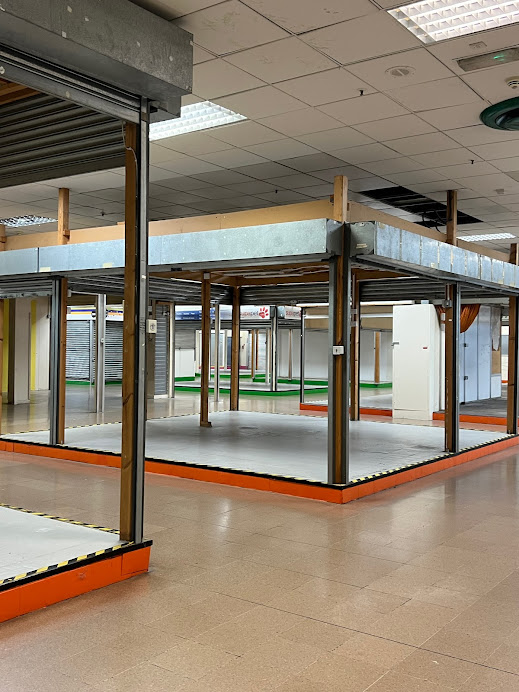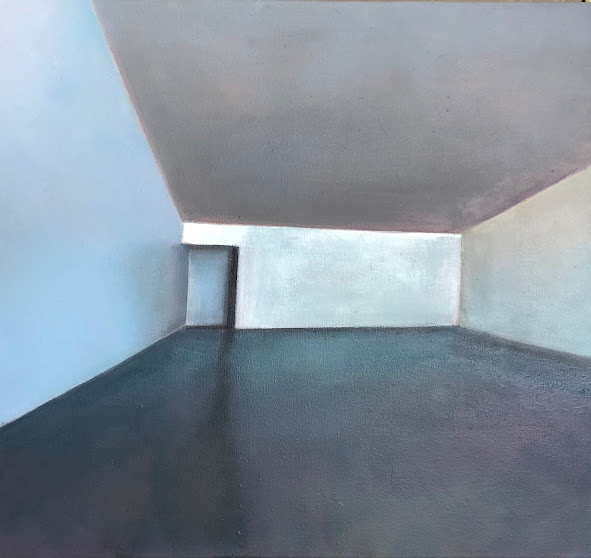Land art is made directly in the landscape by sculpting the land itself or by making structures in the landscape with natural materials. Land art, also known as earth art, was part of the wider conceptual art movement in the 1960s and 1970s. It was established by pioneering artists who investigated natural sites, alternative modes of artistic production, and ways to circumvent the commercial art system.
Earth art, another phrase for land art, is an art technique that is made directly in the landscape, sculpting the land itself into earthworks or making structures in the landscape using natural materials such as rocks or twigs.
Land art was part of the wider conceptual art movement in the 1960s and 1970s. The most famous land artwork is Robert Smithson’s Spiral Jetty of 1970, an earthwork built into the Great Salt Lake in the USA. Though some artists such as Smithson used mechanical earth-moving equipment to make their artworks, others made minimal and temporary interventions in the landscape such as Richard Long who simply walked up and down until he had made a mark in the earth.
(Robert Smithson, Spiral Jetty, 1970)
(Great Salt Lake, Utah)
(Mud, precipitated salt crystals, rocks, water)
A liminal space is a place of transition. It is typically devoid of humans and, in some cases, distinctly surreal—its artistic antecedents might be works of art such as The Red Tower, by Giorgio de Chirico.
So as I experimented with the art of liminal spaces, I researched how the absence of human presence is essential, as it gives off the feeling of unfamiliarity and unrealism, or maybe even being forgotten. Human absence is notably made present by the artist’s gestures and objects in the more figurative-looking works.
To experiment with this art, I tried to recreate some images from the internet by using different media, such as paints, chalk and oil pastels of different surfaces, such as cards, paper and canvas, this way, I found out my strengths and weaknesses. I also took some inspiration from other artists.
My experimental pieces from earliest to latest:
The only issue with this piece is that if I were to do this again, I would stay with the technique of watercolour, but see what the colours would turn out to be as I expected them to be solid colours, not with glitter. I would also keep the colours watered down so that it's subtle and not as bold, so they don't immediately catch the viewer's eye on the colours, instead the outlines should.
(reference image)
----
Mandy Payne, a multi-award-winning recent graduate from Nottingham University who currently lives and works in Sheffield, is an artist inspired by the urban landscape, issues of gentrification, inequality, social housing and the flux of city environments. She is interested in Brutalist architecture, notions of utopia/dystopia and finding beauty in the ordinary/overlooked.
Sheffield's Grade II Park Hill flats are in the process of being reassessed as a modernist treasure. Yet, as the concrete blocks await gentrification, there is the danger of their brutalist grandeur being aesthetically dissolved. She recognises this in Between Places And Spaces, a series of unforgiving paintings of the flats.
Regeneration (Park Hill Estate)
Transience (Park Hill Estate) is my favourite because of how liminal and unreal the image looks. Aerosol spray paint and oil on concrete (Private collection). The lighting on the right makes it look unsettling as liminal spaces are often associated with transitions, in which the image looks as if the light is transitioning to get brighter or darker. The shading is flat, which makes it look basic yet unsettling.
Ferdinanda Florence was an artist who works with liminal spaces, was born in Washington, DC, and grew up in Arlington, VA. She received a degree in art history and studio art at The American University in 1994 and has continued to pursue a successful professional life as a scholar, teacher and practising artist. After earning her Master's degree in art history at the University of Maryland College Park in 1998, she taught high school studio art before launching her career as a freelancer artist.
Liminal Space is a location which is a transition between two other locations, or states of being. Typically these are abandoned, and often empty buildings in the early hours of the day or a school hallway during summer, for example. This makes it feel frozen, slightly unsettling, and familiar to our minds, it makes it uncanny, which Florence used to create her art.
I have taken inspiration from Florence in my own works and so I have been taking photos of empty or long abandoned areas of buildings, like shopping centres. My photos are in transition from busy to emptiness, as Florence shows. I have taken linear perspective into account while taking these photos to capture the abstract shapes, as perspective is very important when painting interiors and streetscapes. However, it is also useful when painting landscapes, still lifes, and figures and portraits.
Images taken by me:
----
Paintings by Florence:
(Sunset no. 1)
(Waterman 9)
(An image that Florence had an interest in; Black Night: Russell's Corner by George Ault, 1943)
(from Florence's series called "Wilson and Old Wilson")
------
Some of my photos of the empty shopping centre market stalls contain abstract shapes, abstract art uses a visual language of shape, form, colour and line to create a composition which may exist with a degree of independence from visual references in the world. These images show basic shapes with some basic colours.
An artist who uses abstract shapes and colours in their works is Anthony Caro (1924 - 2013), during a career that spanned more than six decades, Caro achieved international recognition as one of the world’s leading sculptors. In 1960, he abandoned his earlier figurative work and began making abstract sculptures in welded and painted steel. In a significant departure from tradition, these constructions were placed directly on the ground; dispensing with the convention of presenting sculptures on plinths, they confronted the viewer immediately, producing a one-to-one encounter with objects that were in the world but not of the world.
(Early One Morning, 1962)
(Month of May, 1963)
My inspiration for this technique is Julian Opie, born in London, in 1958, who creates work in a movable way without anyone's help. The portraits consist of animated walking figures, rendered with minimal detail in black line drawing, which are hallmarks of the artist's style. His themes are "engagement with art history, use of new technology, obsession with the human body" and "work with one idea across different media."
- The Guardian.
One of Opie's most notable commissions was the design of an album cover for British pop band Blur in 2000, for which he received a Music Week CADS award. In 2006, he created an LED projection for U2's Vertigo world tour, and in 2008 Opie created a set design for Wayne McGregor's ballet Infra for the Royal Opera House in London.
The work of Julian Opie is known throughout the world. Opie's distinctive formal language is instantly recognisable with public commissions from New York to Seoul, London to Calgary, and an uninterrupted flow of international museum exhibitions. It reflects his artistic preoccupation with the idea of representation and how images are perceived and understood. “Everything you see is a trick of the light,” Opie writes. “Light bouncing into your eye, light casting shadows, creating depth, shapes, colours. Turn off the light and it’s all gone. We use vision as a means of survival and it’s essential to take it for granted to function, but awareness allows us to look at looking and by extension look at ourselves and be aware of our presence."
I have taken inspiration from Opie's works as they move to show a simple action, such as walking, Opie and Caro's art has been used as a reference to my art so that I can use the abstract shapes in the photos to create basic yet detailed images together, therefore the process for the image just created has been used to create another piece of art.
While creating the videos, I would position the shapes at a certain place on the physical image before taking a picture and moving them closer ever so slightly so that it seems like they have been moving by themselves.
Here is the link to the videos.
For the second video, I used a similar approach, but rather than shapes moving closer to their positions, I used the same image but drew the lines with the colours from the original image. Once an image was taken, I would add a line so that the process of the image continues.
Taking inspiration from Piet Mondrian:






































No comments:
Post a Comment